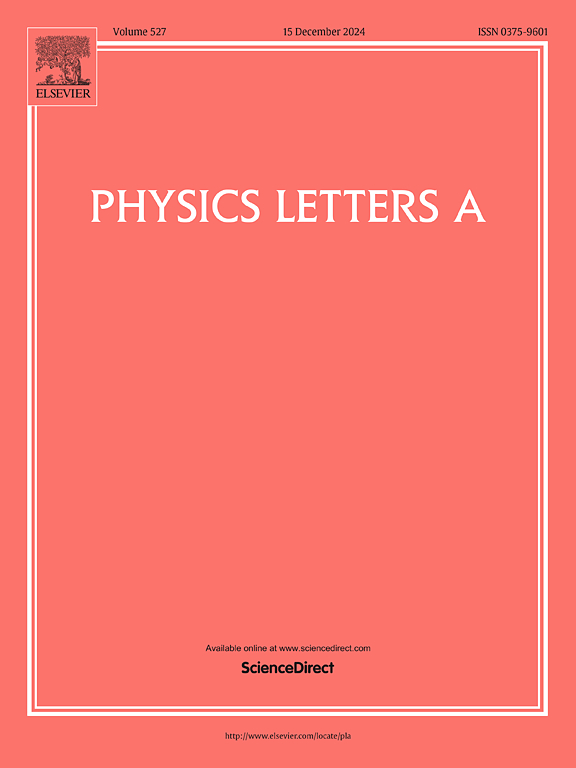The stable conversion for atom-homonuclear-trimer via the resonance-locked inverse engineering
IF 2.3
3区 物理与天体物理
Q2 PHYSICS, MULTIDISCIPLINARY
引用次数: 0
Abstract
We derive an exact passage for atom-trimer conversion via the resonance-locked inverse engineering. In particular, the temporal shapes of the fields and the detunings correspond to the exact solution of the system. As a result, the atoms can be perfectly converted into trimers when we choose the suitable parametrization, in which the conversion rate is close to 100%. Compared to the nonlinear stimulated Raman adiabatic passage, the conversion process for exact passage is more robust and faster, which does not be affected by three-body interactions.
通过共振锁定逆工程实现原子-单核-三聚体的稳定转换
我们通过共振锁定逆工程推导出原子-三聚体转换的精确通道。特别是,场的时间形状和失谐与系统的精确解相对应。因此,当我们选择合适的参数时,原子可以完美地转换成三聚体,转换率接近 100%。与非线性受激拉曼绝热通过相比,精确通过的转换过程更稳健、更快速,不受三体相互作用的影响。
本文章由计算机程序翻译,如有差异,请以英文原文为准。
求助全文
约1分钟内获得全文
求助全文
来源期刊

Physics Letters A
物理-物理:综合
CiteScore
5.10
自引率
3.80%
发文量
493
审稿时长
30 days
期刊介绍:
Physics Letters A offers an exciting publication outlet for novel and frontier physics. It encourages the submission of new research on: condensed matter physics, theoretical physics, nonlinear science, statistical physics, mathematical and computational physics, general and cross-disciplinary physics (including foundations), atomic, molecular and cluster physics, plasma and fluid physics, optical physics, biological physics and nanoscience. No articles on High Energy and Nuclear Physics are published in Physics Letters A. The journal''s high standard and wide dissemination ensures a broad readership amongst the physics community. Rapid publication times and flexible length restrictions give Physics Letters A the edge over other journals in the field.
 求助内容:
求助内容: 应助结果提醒方式:
应助结果提醒方式:


